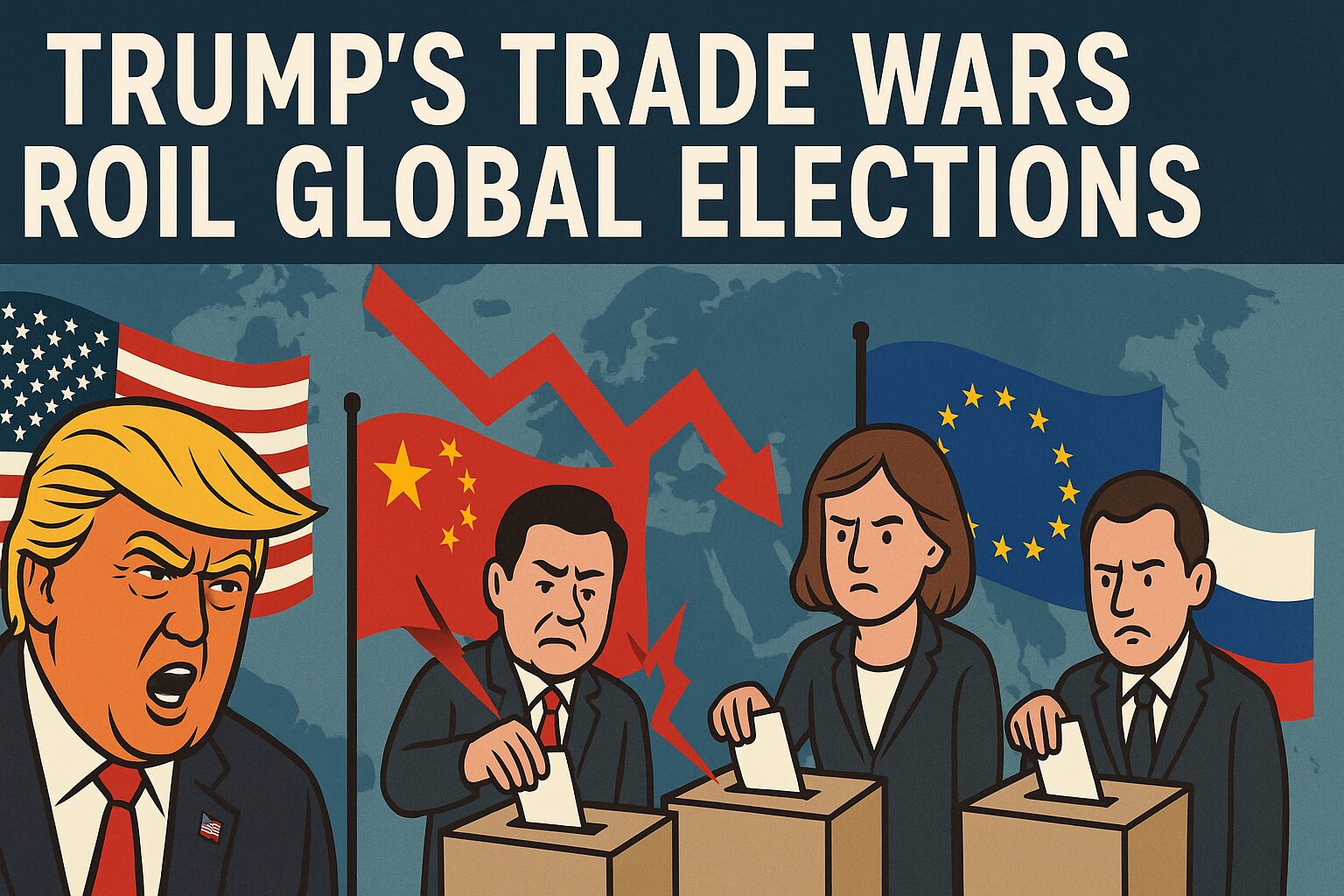Trump’s escalating trade rhetoric and economic message are shaking not just Wall Street but also international elections. As the U.S. hurtles towards the 2026 midterm elections, Donald Trump is making national economic anxieties the focus of his campaign—bragging to be the only individual who can prevent a recession. While U.S. voters wrestle with inflation and market uncertainty, the ripple effect of Trump’s trade policies is triggering real political backlash abroad, most notably in Canada, Australia, and parts of Europe.
The former president, returning to the campaign trail with renewed fire, has leaned heavily into nationalist economic themes. “You’re going to have a recession like you’ve never seen before if I’m not elected,” Trump declared recently. It’s a continuation of a broader strategy: warning Americans that globalism, bad trade deals, and weak leadership are the causes of their economic problems. But it’s not all talk. Trump has threatened to impose hefty tariffs on Chinese imports—proposing rates as much as 60%—while also calling for floor tariffs for all imports. The ideas may thrill parts of his base, but they’re causing tremors in economies worldwide.
Global Economic Anxiety
Trump’s threatened tariffs and isolationist rhetoric are already shaping how U.S. allies are conducting their own elections. In Canada, Prime Minister Justin Trudeau’s party is fighting off efforts by populist opposition parties to exploit economic uncertainty partly attributable to U.S. protectionism. Canadian exports, especially in autos and agriculture, have been hurt by shifting U.S. policies. These are inflaming voter outrage and populist pressures north of the border.
Trade has also been a lightning rod in Australia. The nation has traditionally relied on selling to China and also the U.S. The agenda of a second Trump term has the potential to disrupt that fragile balance, which would lead Australia to reconsider renegotiating past trade agreements. Parties there are already debating more intensely how to position Australia between two economic giants moving in opposite directions. According to The Guardian Australia, election debates nowadays routinely speak of the “Trump effect” when discussing tariffs, inflation, and trade resilience.
Europe is experiencing the same fault lines. Export-reliant industrial Germany has cautioned that Trump’s second term would trigger “a serious downturn” in European exports. French officials have voiced concern that new U.S. tariffs would damage EU economies just as they struggle to gain momentum from slow post-pandemic growth. In Brussels, lawmakers are discreetly drawing up policy contingency plans for what a Trump second term will mean for EU-U.S. relations.
Domestic Strategy, Global Fallout
For Trump, this kind of disruption is not a bug—it’s the feature. His campaign has long thrived on conflict and juxtaposition, and the global tension his policies generate appeals to base voters who feel America has been taken advantage of on the world stage. By leveraging global financial volatility as proof that he is the only leader strong enough to ‘fix’ everything, Trump casts himself as both a disruptor and a savior.
But there is a strategic inconsistency here. On the one hand, Trump argues that the U.S. economy can only flourish behind the barrier of aggressive trade policies. On the other, he seems to downplay fears about both the domestic and global implications of precisely those policies. Trump shrugged off inflation fears at a recent event—blaming them on Biden—and insisted his tariff plans would “revitalize American manufacturing” without causing consumer prices to soar. Economists are less sure.
As a report from the Brookings Institution recently found, Trump’s tariff plans would penalize the average American household to the tune of hundreds of dollars annually in increased prices on staple commodities. The report further observes that retaliatory tariffs from foreign nations would shrink American export markets—harming the very workers Trump is attempting to assist.
Tariff Fallout & Election Season Optics
The direct effects of trade tensions are already being politically felt. In the must-win battleground states like Michigan, where the auto industry is intimately tied with global supply chains, there is growing anxiety about what unfettered trade wars would mean for jobs and production costs. Trump’s policymakers are well aware of this calculus and are betting that voters will blame Biden, not structural policy changes over the long term, for current inflation.
In fact, Trump has recast his economic message as a cultural one that is broader. Instead of speaking about international finance or macroeconomics, he speaks about kitchen-table issues: groceries costlier, jobs sent overseas, small businesses closing. These emotionally resonant messages, although they do not show the whole picture, are expected to resonate strongly in suburban and working-class districts.
That’s why Democrats and world leaders are watching not just Trump’s polls, but also global market reactions to his announcements. As global markets are already responding to what he says—stocks plunge when he threatens trade wars, currencies shift when he talks tariffs—Trump has successfully harnessed international uncertainty for political purposes.
Implications Beyond 2026
What’s unfolding isn’t just a U.S. presidential campaign—it’s a geopolitical stress test. Trump’s campaign trail threats to impose baseline tariffs and “decouple” from China aren’t rhetoric; they’re a fundamental shift in how America might engage with the world economy from now on. That could remake alliances, reorder supply chains, and stress test the foundations of the global commerce built up over the past 70 years.
For nations like Canada and Germany that have long relied on stable U.S. trade policy, the stakes are high. Their political leaders are now being questioned by voters about how they would respond to a second Trump term. Trade ministers from allied nations have begun holding clandestine meetings to talk about possible responses—from regionalized supply chains to more comprehensive trade agreements without the U.S.
Even the International Monetary Fund (IMF) has been waving red flags, noting in a recent update that aggressively imposed unilateral tariffs would increase global inflation and slice GDP growth in both North America and Europe. As Reuters noted, central banks have already begun to rethink rate strategies in anticipation of yet more volatility.
What It Means for Voters
For American voters, the most important question is thus one of trade-offs. Will the possible gains to manufacturing and national independence be worth the costs in terms of increased consumer prices and compromised international alliances? Above all, how will middle-income voters perceive the connection between foreign trade policy and their everyday financial security?
It’s all the more challenging to navigate without financial literacy. If tariffs, trade deficits, and inflation news have you stressed, check out our Finance page for understandable guides, budgeting resources, and news about how worldwide economics impact your home front bottom line.
As 2026 draws near, the economy will still be at the top of the race—but it’s not just America’s economy that hangs in the balance. Trump’s trade policies have the potential to redraw the lines of world power imminently, impact how allies campaign, and test the mettle of long-standing diplomatic relations. In this way, his campaign is not just about beating Biden—it’s about reshaping the entire global economic framework.



